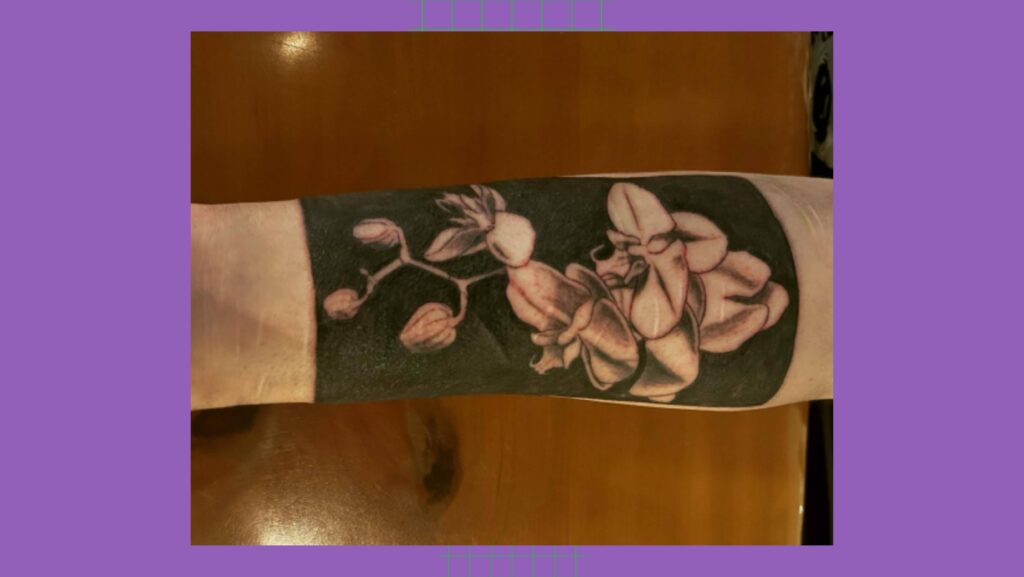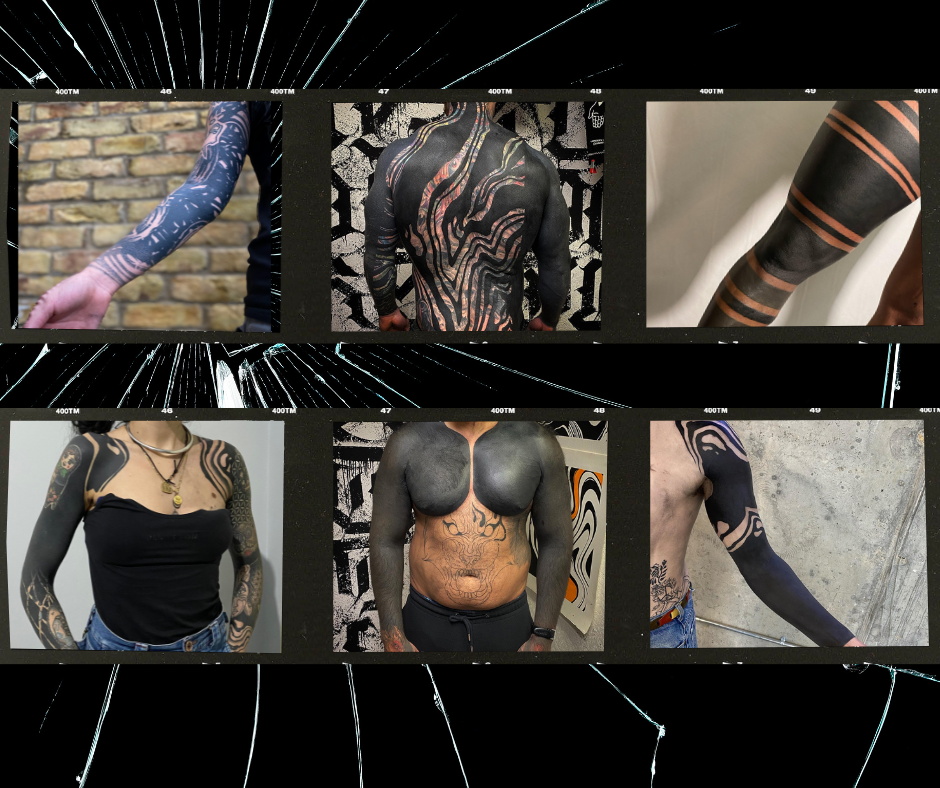If you have a tattoo, you’ll no doubt have been faced with the dreaded statement, “but that’s so permanent!”. It therefore might be surprising to learn that more and more people are taking this permanence to an absolute extreme. The trend of covering large chunks of your body, sometimes entire limbs, purely in black ink is growing.
Known as a blackout tattoo, the practice is influenced by traditional Polynesian art and most commonly used to cover up previous tattoos. They became popular in South Asia in the 2010s, before spreading to Western culture as a fashion trend, with Singaporean tattoo artist Chester Lee’s viral blackout designs paving the way.
A 2022 YouGov study found that 26% of British people have tattoos, with 11% having at least one visible tattoo on either the head, neck, face, forearms, wrists or hands. This figure has increased by nearly 10% since 2015. However, with more tattoos come also more bad tattoos; this is where the art of the cover up saves the day.
Blackout tattoos have risen in popularity within recent years, as more people want to disguise the mistakes of tattoos past. Whether that be a spontaneous drunken holiday souvenir or the reminder of a past relationship that ended badly, cover ups are extremely common in the tattoo world.
“People like me, we are operators. We are artists with a canvas. What we do is a craft”
Salvatore D’Amico, a London-based tattoo artist specialising in blackouts, says when he started tattooing in 2015, blackouts were only common on people who work as piercers. “You’d see someone with a black sleeve and know they were a piercer,” he says. This phenomenon arose as piercers became the guinea pigs for tattoo apprentices in parlours across the country. The often poor work done by these apprentices left piercers turning to blackouts to hide their mistakes.
Some people go through multiple painful cover ups just to be left equally unsatisfied with every result. And since it’s recommended that cover ups are between two to three times the size of the original tattoo, blacking out the whole area has become an increasingly appealing option. Many people are also priced out of laser tattoo removal, which can cost upwards of £1,000.
But not everyone gets blackouts as a means to cover up old tattoos. Paul Buzard from Pennsylvania, US, is currently in the process of blacking out a large portion of their previously untouched arm. “I chose to start blacking out my arm because of self-harm scars,” says Paul. “I’ve been able to move beyond that part of my life, so the blacking out was a way to cover the scars, move on, and not have to notice them as much. A few years ago, I thought blacking out limbs was a dumb idea; I would wonder why someone would do it, but then I got to know a few people who blacked out sections of their limbs to cover old scars.”
Paul’s tattoo is not just a blacked-out section of skin, but rather a combination of solid black ink and what most people think of as a “normal” tattoo. This is a popular option for people who want to work with existing tattoos instead of covering them completely.

Mónica Álvarez from Burgos, Spain, opted for a similar style, combining a blackout sleeve on her right arm with other pieces. It’s a dramatic look that utilises multiple styles of tattooing and gives her the option to cover the last remaining tattoos in the future. “I’ve always been interested in blackout tattoos. They’re art just like other tattoos,” she says. “I know I’m not going to regret it at all.”

However, growing popularity always brings growing controversy. A quick google will bring up pages of negative articles and stories about why blackout tattoos are bad for your health and culturally inconsiderate, which are issues that can’t be ignored. It’s been argued that blackout tattoos are racially insensitive because they involve changing your skin colour and co-opting a traditional art form.
Salvatore, who currently works at Blank Collective tattoo studio in Deptford, blacked out his leg himself and faced backlash from a nurse who argued he was just trying to “make himself black”. He explains his blackout tattoo is not “a choice to change my skin tone. This represents something, and I can try to explain that to people but they may not understand. It’s not to offend black people.”
“In Western culture, blackouts are associated with black metal and heavy metal,” he says, rather than the traditional cultures they’re associated with in the East. But as most blackwork today is called tribal or neo tribal, it’s clear the connection to the origin of tattoos as non-Western scarification rituals is still strong.
The connection between blackout tattoos and music is something that Paul also resonates with in their journey of “moving on from the past”. Paul was inspired by one of their favourite musicians, Laura Jane Grace from the band Against Me!, who used blackout tattoos to cover the ones she had before transitioning.
“People like me, we are operators. We are artists with a canvas. What we do is a craft,” says Salvatore. “Tattoos are something very personal, but they don’t define your personality. It’s just unfortunate that we live in a society where first impressions are the most important thing for people. Now, a nice blackout is more accepted in society; it’s better than having tattoos that look like crap!”
It’s clear that since the so-called ‘tattoo renaissance’ of the 1950s, the art form has gone from subculture to popular culture. This move into the mainstream has been met with confused stares and pointed fingers, but that clearly hasn’t deterred the growing number of brave people getting this extreme ink.
Pictures: Salvatore D’Amico

